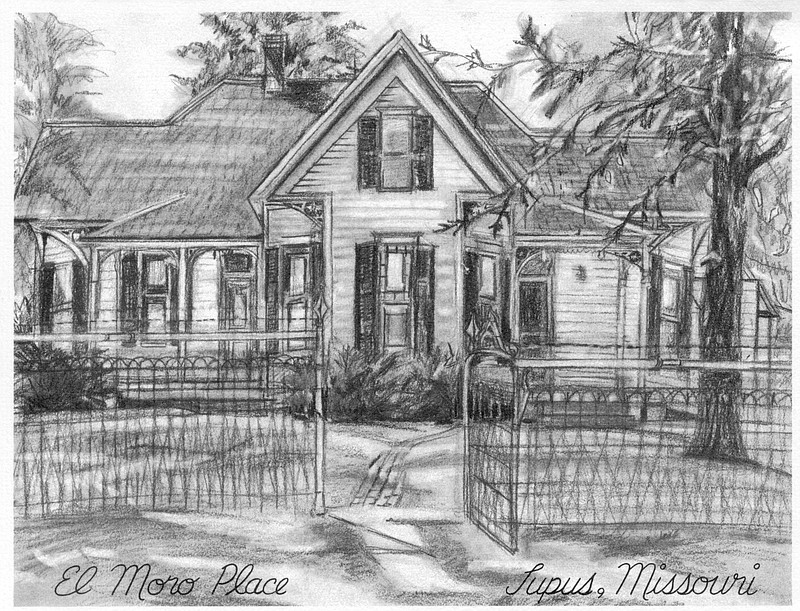By Michelle Brooks
LUPUS - The tradition of eldest sons inheriting the bulk of their family's assets has sent the Clay family west - from England to Jamestown, Virginia, to Kentucky and, 200 years ago, to what today is Moniteau County.
Clay Farms celebrated its bicentennial Saturday at its Lupus offices.
John Hudson Clay owns the operation established by his great-great-great-grandfather, Jeremiah Walker Clay in 1816. He runs the farms with his son, Andrew, and hopes a grandchild will keep the farm going for generations to come.
Prominently positioned at the front of the newly-built barn and office at 56987 Route P is a display case of family memorabilia and other whimsical items.
Displaying these cherished pieces, from Jeremiah Clay's hat to an 1828 land grant signed by President John Q. Adams, was a priority for Clay.
"We need to share," he said. "Keeping it packaged up somewhere is not what it's about."
In the same way, the unique anniversary presented an opportunity to bring together extended Clay family, as well as share the family's history with the community, he said.
Captain John Clay arrived in the early days of the Jamestown colony, building a farm on the south side of the James River. But agriculture was not his sole source of income.
Diversification has been a consistent Clay family tradition, Clay said.
For their immigrant-ancestor, John, 400 years ago, he opened a trading post.
The second generation, Dr. Charles Clay, was a soldier in Bacon's Rebellion. More importantly, he was great-grandfather to both Jeremiah and the historic statesman Henry Clay, who served as Speaker of the House, U.S. senator and a a presidential candidate.
After Charles Clay Jr. came James Clay, whose seventh child was Jeremiah.
"He must have looked at this adventure as an opportunity for him," Clay said.
Born in Chesterfield County, Virginia, Jeremiah moved to Kentucky and then St. Charles by 1799. Family stories say he led a Kentucky colony in 1816 likely to be the first white settlers in Moniteau County.
The site they chose was called Wolf Point, eventually resulting in today's name of Lupus, Latin for "wolf."
Jeremiah's diversification was opening the first Lupus trading post.
During the Great Depression and other difficult times, the Clay family had a security from the combination of farming and other pursuits, Clay said. Because of that, they were able to help their neighbors and community, too, he said.
"Business, ag retail, trading and outside jobs - diversification was instilled in us, to not rely on only one thing," he said.
Although it was the younger Clay sons who headed west, it would be mostly the eldest sons who would carry on the family's farming interests in Lupus through the next two centuries.
Green Clay, who served as a Missouri senator, was son of Jeremiah. His youngest son, John, was the first owner to be born on the Clay homestead.
The sentimental house, El Moro, which accidentally burned in recent years, was built by John and his wife Frances in 1892 on a hill overlooking the Missouri River. He organized the Lupus Bank, donated land for the Baptist church and taught at the Moore School.
John's son Alexander, expanded the family land holdings. And Alexander's son Henry, Clay's father, continued to expand the operation.
In addition to the Clay Farms, Clay operates the Jamestown Agri Service. His son, Andrew, has been in leadership positions in both Missouri Farm Bureau and Young Farmers.
"I'm proud my son is back in the operation," Clay said. "I hope it blesses his life as well as it has mine."
The Clay family history always has been cherished and education valued, Clay said. Two of his great uncles married sisters who were school teachers. Both were emphasized as he spent much of his childhood visiting them at the El Moro home.
"We were in the midst of it," he said.
Clay's son is the fourth generation to earn a college education.
Furniture and sundries from previous generations fill the farm offices, especially those which came from El Moro.
"I have very fond memories of El Moro," Clay said.
Another Clay family tradition is baseball. A great-uncle, Dorsey, played on the St. Louis Cardinals farm club and another could rattle off team statistics and line-ups for any season.
When the Cardinals went to its first World Series in 1926, Clay's grandfather paid to have the game telegraphed to the Lupus station and hired an announcer to read the play-by-play.
One of the popular items on display for visitors Saturday was an old, hardcover store catalog with early Cardinals newspaper clippings and photos pasted over the pages.
"A lot of things in our family haven't changed much," Clay said.

